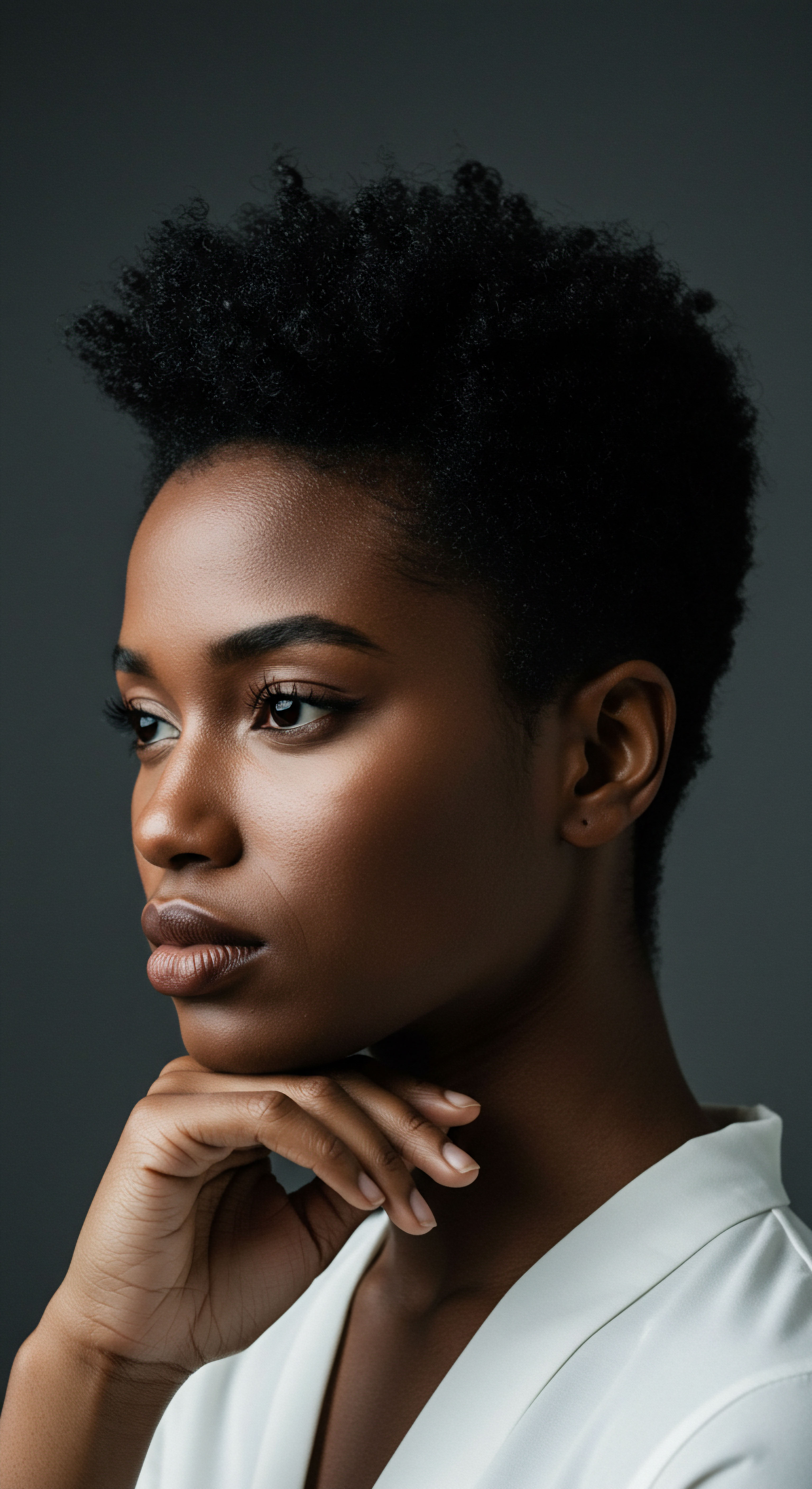
Roots
The sensation of a dry scalp, a subtle whisper at first, can gradually grow into a persistent discomfort, pulling focus from the vibrancy of life to the irritation at its source. For those with textured hair, this experience often carries a particular weight, deeply tied to the hair’s unique architecture and its historical journey through varied care practices. To truly soothe this dryness, one must journey to the very foundations of what causes it, understanding the elemental interplay between our bodies, the products we use, and the environment that surrounds us. It is a quiet observation, a common thread in the tapestry of hair care, that prompts a deeper look into the ingredients that might be silently working against our scalp’s natural balance.
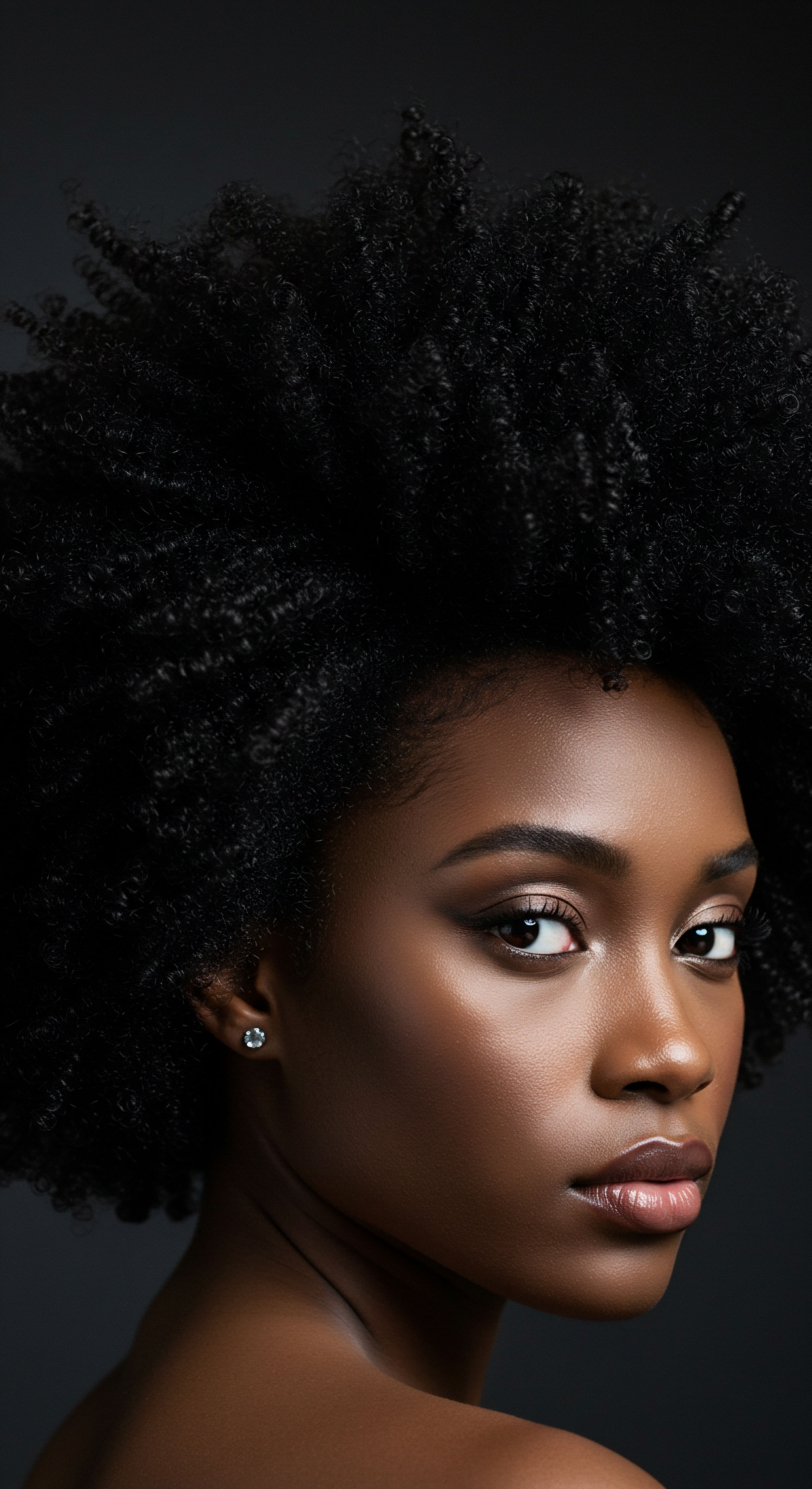
The Scalp’s Delicate Shield
Our scalp, a living canvas for our hair, possesses a remarkable protective layer known as the stratum corneum. This outermost shield is a careful construction of cells and lipids, particularly ceramides, working in concert to regulate moisture and guard against external aggressors. When this barrier is compromised, water escapes too readily, leading to the familiar signs of dryness ❉ flaking, itching, and a feeling of tightness. Understanding this intrinsic defense is the initial step in discerning how certain ingredients might disrupt its delicate equilibrium.
The scalp’s outer layer, a blend of cells and lipids, acts as a crucial barrier against moisture loss and external factors.
For textured hair, the scalp’s innate characteristics, including sebum production and the structure of the hair follicle, influence how it responds to various substances. The natural coils and curves of textured strands can make it more challenging for natural oils to travel down the hair shaft, sometimes leaving the scalp feeling less lubricated, even when sebum production is adequate. This predisposes the scalp to greater sensitivity to ingredients that further strip away its protective oils.

Common Cleansing Agents and Their Effects
Among the most frequently encountered ingredients implicated in scalp dryness are certain cleansing agents, known as surfactants. These are the workhorses of shampoos, responsible for the satisfying lather and the removal of dirt, oil, and product buildup. While effective, some can be overly enthusiastic in their cleansing action, disrupting the scalp’s natural lipid layer.
- Sulfates ❉ These anionic surfactants, such as Sodium Lauryl Sulfate (SLS) and Sodium Laureth Sulfate (SLES), are widely present in many conventional shampoos. They create abundant foam and cleanse powerfully. However, this power comes with a potential cost. Sulfates can strip the hair and scalp of their natural oils and moisturizers, leaving behind dryness, flaking, and irritation. Their ability to remove lipids from the scalp’s barrier contributes to transepidermal water loss, exacerbating dryness.
- Harsh Alcohols ❉ Not all alcohols are created equal in hair care. Short-chain alcohols, often found in quick-drying styling products like hairsprays and dry shampoos, are known for their drying properties. Ethanol, propanol, isopropyl alcohol, and SD alcohols are examples of these. They evaporate rapidly, taking with them the moisture from the scalp and hair. Isopropyl alcohol, for instance, can strip away protective oils, leading to irritation, dryness, or even an overproduction of oil as the scalp attempts to compensate.
The sensation of a deeply cleansed scalp, often associated with a squeaky-clean feel, can paradoxically signal a disruption of its natural balance. This feeling, while initially perceived as cleanliness, may indicate that essential lipids have been removed, leaving the scalp vulnerable to moisture loss.

Ritual
Stepping into the space of daily hair care practices, we recognize that the path to a soothed scalp is often paved with conscious choices about the products that become part of our regular rituals. The ingredients within our shampoos, conditioners, and styling aids play a quiet yet significant role in the story of our scalp’s well-being. This understanding moves beyond mere product selection, inviting us to consider the gentle rhythm of care that respects our scalp’s natural harmony. It is in these consistent applications, these moments of intentional nourishment, that we truly begin to witness the practical wisdom unfold.
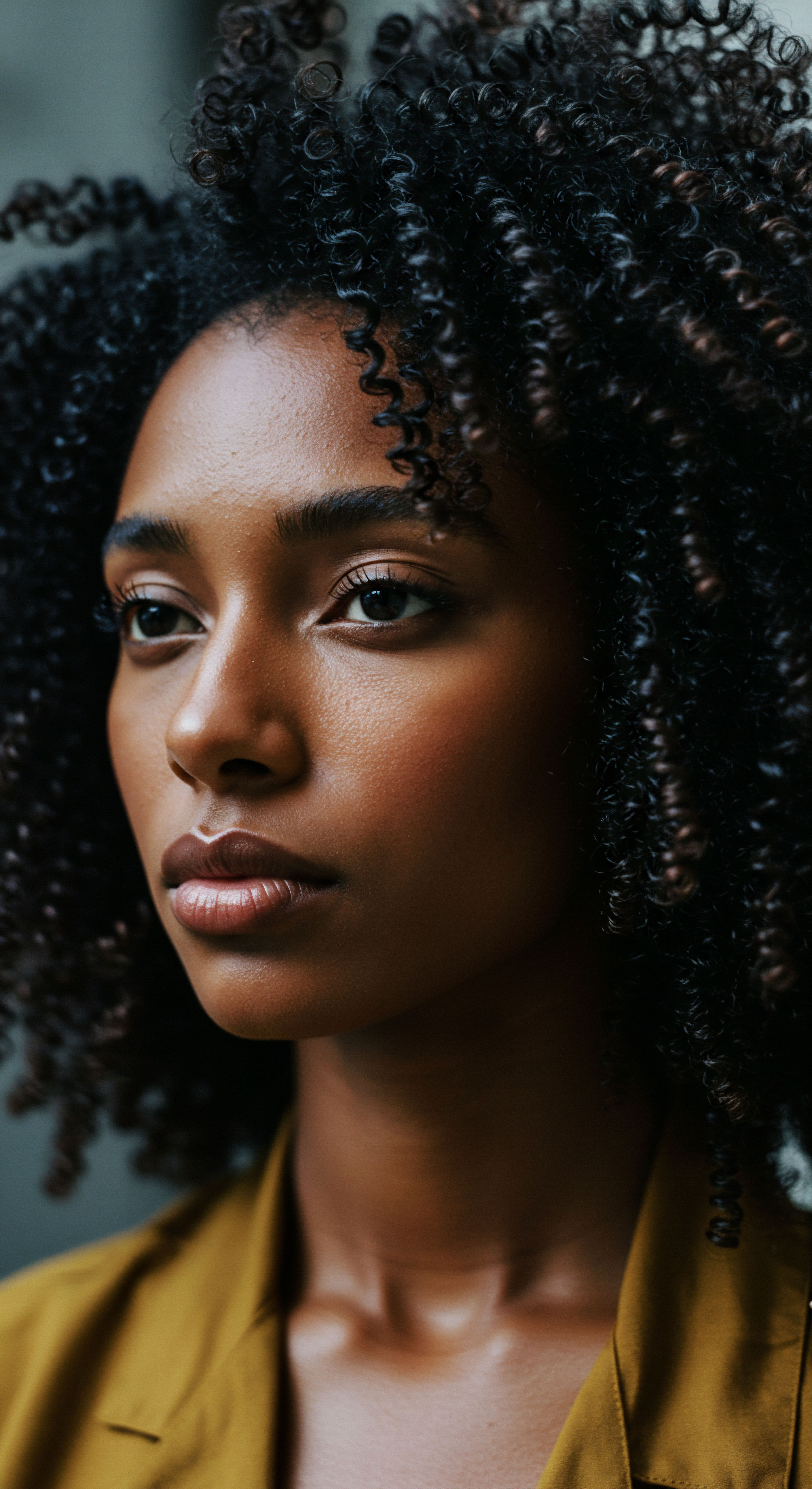
Hidden Irritants in Daily Formulas
Beyond the primary cleansing agents, a range of other ingredients, often added for preservation, scent, or texture, can contribute to scalp dryness, particularly for sensitive individuals. These are often the less obvious culprits, acting subtly within our routines.

Do Preservatives Affect Scalp Hydration?
Preservatives are essential for extending product shelf life and preventing microbial growth, yet some can trigger adverse reactions on the scalp. Certain chemicals, while preserving the product, may cause dryness, itchiness, and redness.
- Methylisothiazolinone (MI) and Methylchloroisothiazolinone (MCI) ❉ These preservatives, often found in liquid personal care products, have been linked to contact dermatitis and scalp irritation. An “epidemic” of contact allergic dermatitis was observed following the widespread domestic use of MI, which was initially used industrially. Cases of scalp dermatitis due to MI have been reported, with symptoms including redness, swelling, itching, and flaking.
- Formaldehyde Releasers ❉ Compounds like DMDM Hydantoin, Quaternium-15, Diazolidinyl Urea, and Imidazolidinyl Urea slowly release formaldehyde to prevent bacterial growth. Formaldehyde is a known allergen and can cause skin irritation, impacting scalp health and potentially leading to dryness and discomfort.
- Parabens ❉ Used as preservatives to prolong shelf life, parabens (e.g. methylparaben, propylparaben) can disrupt the natural moisture barrier and pH balance of the skin, leading to inflammation, dryness, and itching for some individuals, particularly those with sensitive skin.
The European Scientific Committee on Consumer Safety, in 2015, banned the use of MI in all new leave-on products and lowered its concentration in rinse-off products due to its sensitizing potential, a testament to the ingredient’s capacity for irritation.
Preservatives, while extending product life, can sometimes provoke dryness and irritation on the scalp.

Can Fragrances Lead to Scalp Dryness?
Fragrances, while enhancing the sensory experience of hair care, are a common cause of skin allergies and contact dermatitis. They contain synthetic chemicals that can trigger various reactions, including redness, inflammation, itching, and a compromised skin barrier. Even products labeled “unscented” might contain masking fragrances.
A 2018 case-control study involving 80 young adults highlighted how skin sites washed with hard water significantly increased Sodium Lauryl Sulfate (SLS) deposits, which in turn increased transepidermal water loss (dryness) and caused skin irritation. This suggests an interaction between water quality and cleansing agents, where the minerals in hard water hinder the proper rinsing of soaps, allowing unrinsed soap to draw out natural skin oils, leading to dryness, flaking, and itching. While this study focused on skin, its implications for the scalp are significant, as the scalp is an extension of the skin.
| Ingredient Category Strong Surfactants |
| Examples Sodium Lauryl Sulfate, Sodium Laureth Sulfate |
| Mechanism of Action Strip natural oils and lipids, disrupting the scalp's protective barrier. |
| Ingredient Category Drying Alcohols |
| Examples Ethanol, Isopropyl Alcohol, Propanol, SD Alcohol |
| Mechanism of Action Evaporate quickly, taking moisture from the scalp and hair. |
| Ingredient Category Preservatives |
| Examples Methylisothiazolinone, Methylchloroisothiazolinone, Formaldehyde Releasers (e.g. DMDM Hydantoin, Quaternium-15), Parabens |
| Mechanism of Action Can cause allergic or irritant contact dermatitis, disrupt moisture barrier. |
| Ingredient Category Fragrances |
| Examples "Fragrance," "Parfum," various individual aromatic compounds |
| Mechanism of Action Common allergens that can trigger irritation, inflammation, and compromise the skin barrier. |
| Ingredient Category Certain Silicones |
| Examples Dimethicone (water-insoluble) |
| Mechanism of Action Can cause buildup, preventing moisture from reaching the scalp and hair over time. |

Relay
As we move beyond the immediate experience of dryness, a deeper inquiry beckons, one that considers the intricate web of biological predispositions, environmental whispers, and the often-unseen chemical conversations occurring on our scalp. This exploration invites us to consider not just individual ingredients, but their dynamic interplay within complex formulations and the broader context of our hair’s heritage. It is a journey into the less apparent complexities, where science and personal experience converge to paint a more complete picture.

Beyond the Obvious ❉ Unseen Chemical Interactions
The impact of an ingredient is not always a standalone event. The efficacy and potential for irritation of a single component can be significantly altered by the presence of others in a product. This complex interplay shapes the ultimate experience for the scalp.

How Does PH Balance Impact Scalp Hydration?
The scalp maintains a slightly acidic pH, typically between 4.5 and 5.5, which is vital for the integrity of its barrier function and the health of the skin microbiome. Products with an imbalanced pH, particularly those that are too alkaline, can disrupt this natural acidity. This disruption can compromise the scalp’s protective barrier, leading to increased water loss and susceptibility to irritation and dryness. When the scalp’s natural acidic mantle is disturbed, it becomes more vulnerable to bacterial and fungal overgrowth, potentially exacerbating conditions that present with dryness.
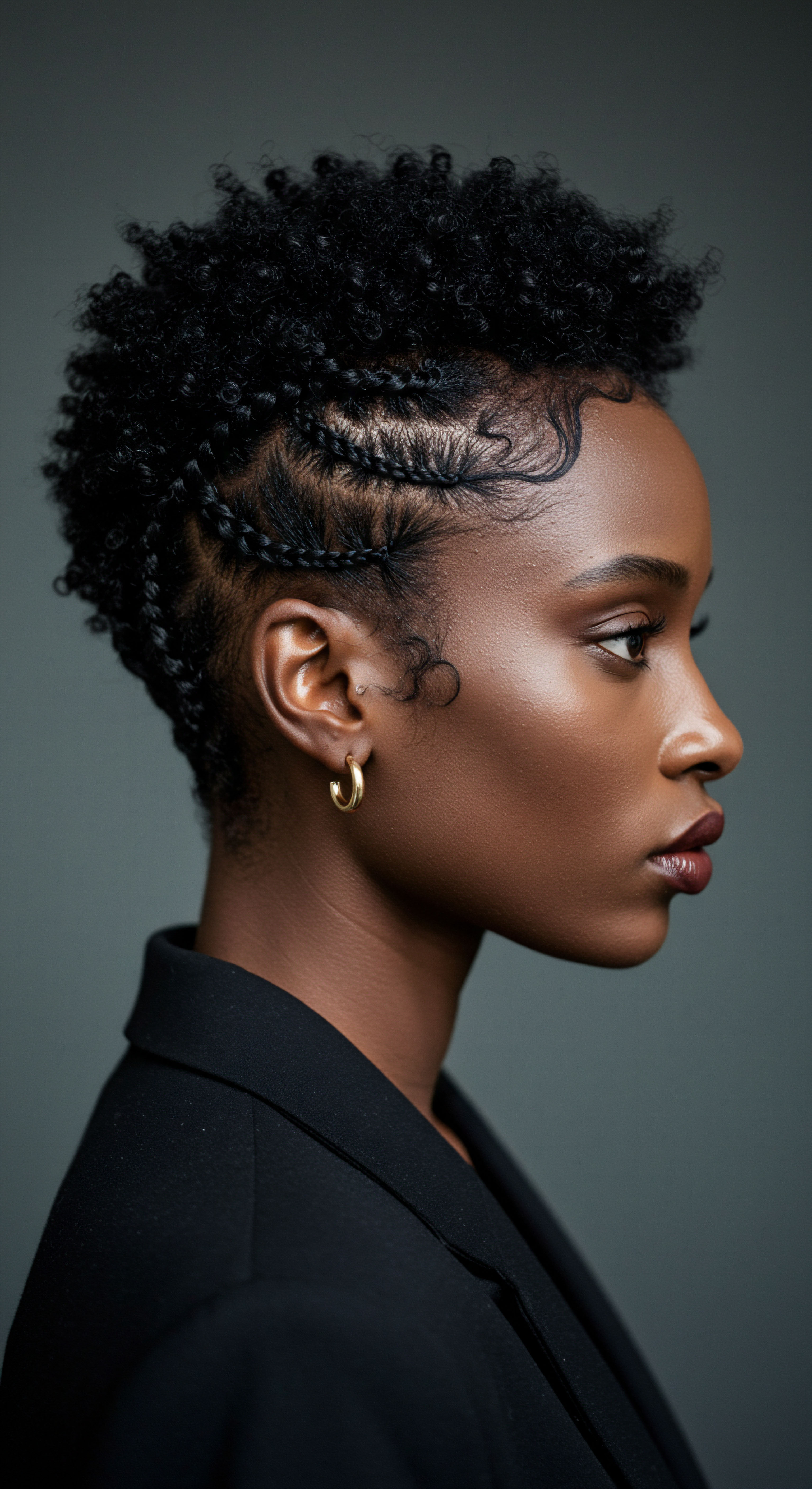
Are All Oils and Butters Beneficial for a Dry Scalp?
While many natural oils and butters are celebrated for their moisturizing properties, their application requires discernment, especially for textured hair. Some heavier oils, if used excessively or without proper cleansing, can lead to product buildup on the scalp. This buildup can create an occlusive layer that, over time, might hinder the scalp’s natural respiration and potentially trap dead skin cells and environmental debris.
Paradoxically, this accumulation can lead to a sensation of dryness beneath the surface, or even trigger irritation, as the scalp’s balance is disturbed. The effectiveness of cleansing routines becomes paramount when incorporating richer emollients, ensuring that beneficial lipids are deposited without creating a barrier to scalp health.
Consider the common experience of those with textured hair who regularly use rich creams and butters to maintain moisture. While these products are invaluable for conditioning the hair strand, a disconnect can arise if the scalp is not adequately cleansed. The residual layers can prevent the scalp from shedding its dead skin cells naturally, leading to flaking that is often mistaken for inherent dryness, rather than a symptom of buildup.
The interplay of ingredients and their concentrations, alongside water quality, shapes the scalp’s response.
Moreover, the concentration of certain ingredients matters. Even beneficial components, when present in very high concentrations, might alter a product’s overall effect. For instance, while fatty alcohols (like cetyl and stearyl alcohol) are generally hydrating and act as emollients, their formulation alongside harsh surfactants in a shampoo might still result in a drying effect if the overall balance is skewed towards aggressive cleansing.
The quality of water used for washing hair also plays a role. Hard water, rich in minerals like calcium and magnesium, can interact with cleansing agents to form a film on the hair and scalp. This film can hinder moisture penetration and make it more difficult to rinse products thoroughly. While some studies suggest hard water does not significantly impact hair tensile strength or elasticity in short-term exposure, other research indicates that hard water can decrease hair strength and increase breakage, especially when interacting with cleansers and sebum.
A 2018 study on 70 male individuals showed a significant decrease in hair strength when treated with hard water compared to deionized water (P = 0.001), suggesting an increased propensity for breakage. This indicates that the environment in which our hair care rituals take place can amplify or mitigate the effects of product ingredients.

Genetic Blueprints and Environmental Whispers
The predisposition to scalp dryness is not solely a matter of product ingredients; it is also influenced by our genetic makeup and the environmental conditions we inhabit. Textured hair types, by their very structure, often exhibit a different relationship with natural scalp oils, making them more susceptible to dryness if care routines are not precisely calibrated.
Genetic variations can influence the scalp’s barrier function. For example, some individuals may have reduced ceramide levels in their stratum corneum, making them more prone to dry skin conditions, including a dry scalp. A study found that scalps with dandruff often exhibit low ceramide levels, and increasing ceramide levels can improve scalp conditions. This inherent biological difference means that certain ingredients, even those considered mild, might still prove too stripping for an already compromised barrier.
Environmental factors, such as humidity levels, air pollution, and seasonal changes, also play their part. Dry climates or harsh winter air can draw moisture from the scalp, making it more vulnerable to the drying effects of certain ingredients. Conversely, humid environments might necessitate different product choices to avoid buildup, which, as discussed, can indirectly lead to dryness. The delicate dance between our internal biological predispositions and the external world constantly shapes our scalp’s needs.
The choice of hair care products for textured hair, therefore, becomes a thoughtful conversation between traditional wisdom and modern scientific understanding. Ingredients that respect the scalp’s natural lipid barrier and pH, while providing effective cleansing and conditioning, are paramount. This may mean seeking out formulations that employ milder surfactants, such as amino acid-derived cleansing agents, which clean without overly stripping natural oils.
It also involves a conscious approach to products containing known irritants, opting for fragrance-free or minimal-ingredient options when sensitivity is a concern. The aim is to create a serene environment where the scalp can flourish, supporting the vibrant life of textured strands.
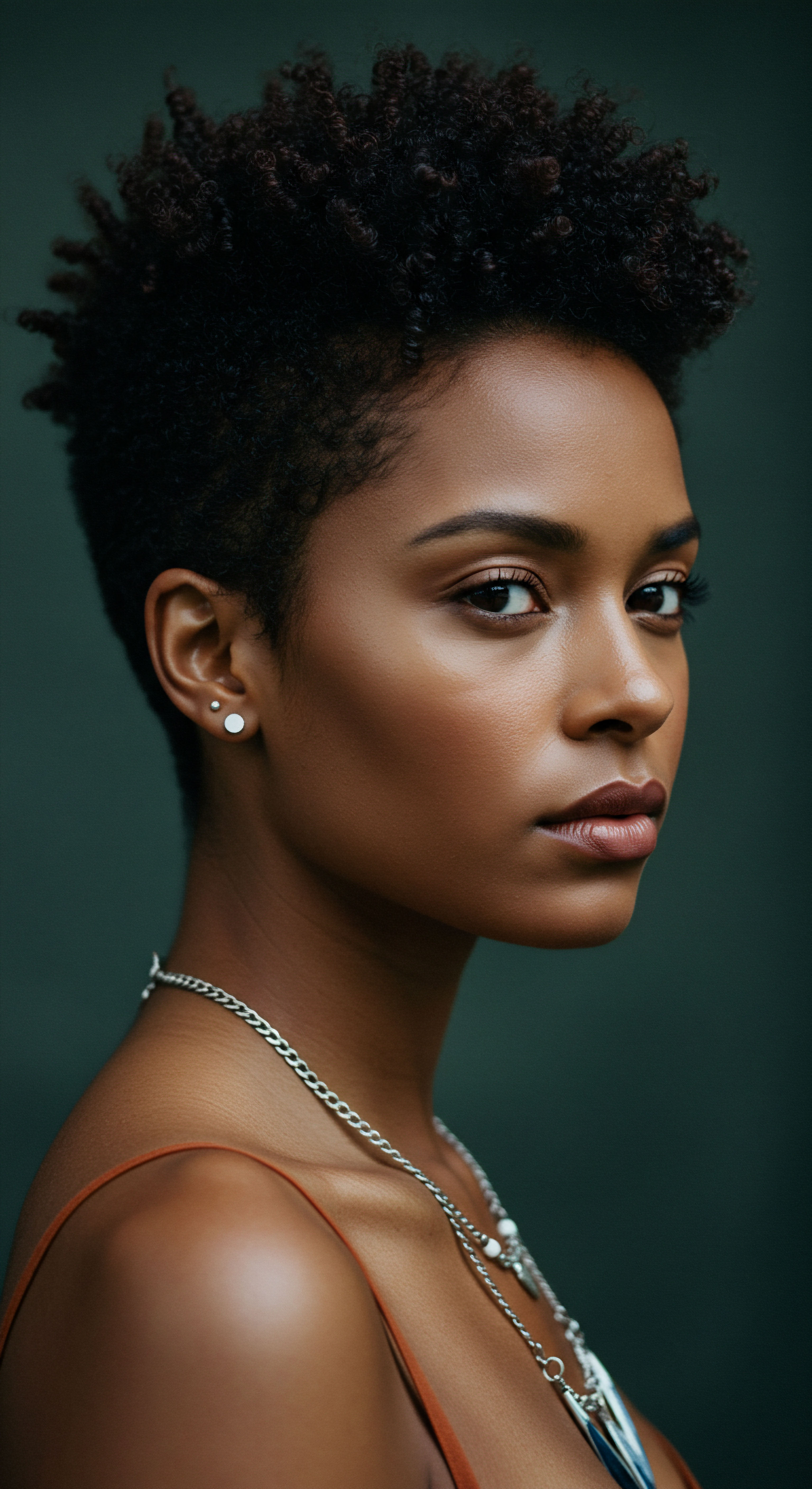
Reflection
As we conclude our exploration into the ingredients that can contribute to scalp dryness, a deeper appreciation for the intricate connection between our hair, our well-being, and the world around us gently settles. The journey has taken us from the foundational understanding of the scalp’s delicate balance to the subtle influences of daily rituals and the complex interplay of chemistry and environment. It becomes clear that caring for textured hair is not merely about addressing symptoms, but about listening closely to the quiet language of our bodies and responding with intentional, informed tenderness. May this understanding serve as a gentle guide, leading each of us toward choices that honor the unique beauty and resilience of our strands, allowing our crowns to truly flourish.
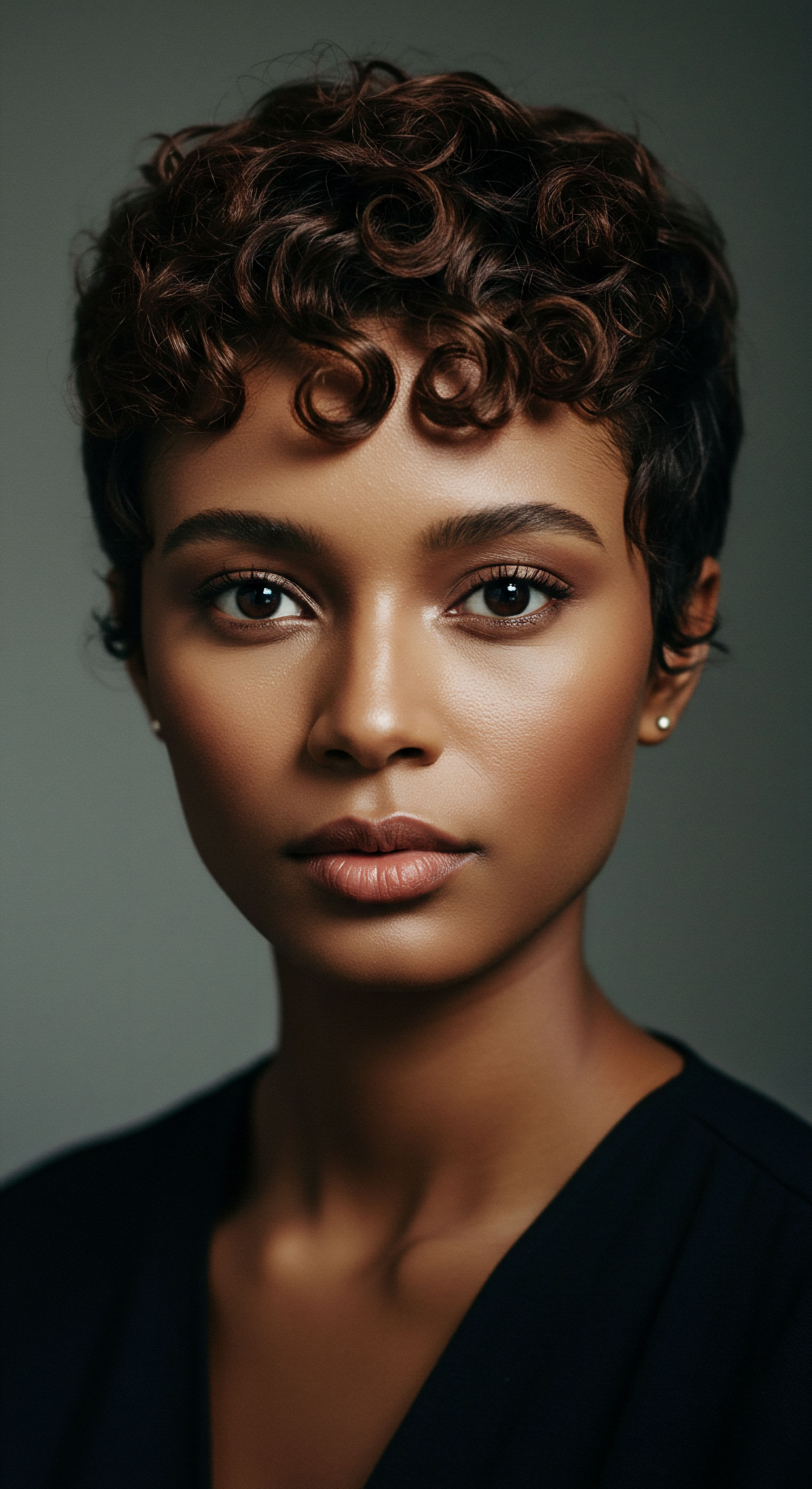
References
- 1. Aleid, A. et al. “Contact Dermatitis Due to Hair Care Products ❉ A Comprehensive Review.” MDPI, 2023.
- 2. Aleid, A. et al. “Allergic contact dermatitis of the scalp ❉ a review of an underdiagnosed entity.” PMC, 2024.
- 3. Monpure. “Good vs. Bad Alcohols in Haircare.” MONPURE, 2021.
- 4. Olsson Scandinavia. “Your scapular health matters – how to keep your scalp healthy!” Olsson Scandinavia.
- 5. Arai, Y. et al. “Understanding the Characteristics of the Scalp for Developing Scalp Care Products.” Journal of Cosmetics, Dermatological Sciences and Applications, 2019.
- 6. Chanda, S. et al. “Effects of Hard Water on Hair.” Journal of Clinical and Diagnostic Research, 2013.
- 7. MDhair. “Are drying alcohols wrecking your hair?” MDhair, 2025.
- 8. Singh, M. et al. “Chemistry of Wellness ❉ Hair and Hair Care.” Cosmetics, 2022.
- 9. Prose. “Science Class 16 ❉ Lipids + hair health.” Prose, 2023.
- 10. Healthline. “How to Treat and Prevent Hard Water Hair Damage.” Healthline, 2020.
- 11. Philip Kingsley. “3 Hair Product Ingredient Myths Debunked.” Philip Kingsley, 2022.
- 12. Genesis Career College. “8 Ingredients to Avoid in Your Shampoo and Conditioner.” Genesis Career College.
- 13. DermNet. “Methylisothiazolinone allergy (MI).” DermNet, 2016.
- 14. Khan, S. et al. “To Evaluate and Compare Changes in Baseline Strength of Hairs after Treating them with Deionized Water and Hard Water and its Role in Hair Breakage.” Journal of Pakistan Association of Dermatologists, 2018.
- 15. Practical Dermatology. “Contact Dermatitis and Hair Care.” Practical Dermatology, 2024.
- 16. Beautycon.com. “Good Alcohols vs. Bad Alcohols.” Beautycon.com, 2023.
- 17. Mota, A. A. et al. “Contact dermatitis to methylisothiazolinone.” Anais Brasileiros de Dermatologia, 2015.
- 18. Olsson Scandinavia. “Could the fragrances in your haircare be causing you irritation?” Olsson Scandinavia.
- 19. Abdelnabi, N. M. et al. “Hair Product Allergy ❉ A Review of Epidemiology and Management.” Cureus, 2024.
- 20. Reddit. “Any science behind hard water/calcium changing hair texture, causing breakage?” Reddit, 2023.
- 21. Vanicream. “5 Hair Care Ingredients That May Be Causing Itchy Scalp.” Vanicream.
- 22. NaturallyCurly. “The Truth About Surfactants For Curly Hair Products And Why You Need Not Just Mild Ones.” NaturallyCurly.
- 23. Mayo Clinic. “Contact dermatitis – Symptoms and causes.” Mayo Clinic, 2024.
- 24. SEEN. “Are you allergic to your haircare products?” SEEN.
- 25. NaturallyCurly. “Itchy Scalp and Skin? Look at the Preservatives.” NaturallyCurly, 2011.
- 26. Balance Hair Care. “Alcohols in Hair Care ❉ The Good, The Bad, and Those You Should Know About.” Balance Hair Care, 2023.
- 27. Cosmetics Ingredients. “Isopropyl Alcohol (Antifoaming Agent).” Cosmetics Ingredients.
- 28. Curlsmith. “How Safe is Fragrance in Hair Products?” Curlsmith.
- 29. Monarch Chemicals. “Decoding Chemistry ❉ Cosmetic ingredients and their functions.” Monarch Chemicals, 2023.
- 30. WebMD. “Methylchloroisothiazolinone Allergies ❉ Symptoms and Treatment.” WebMD.
- 31. Nae Nae’s Naturals. “Toxic Chemicals ❉ Isopropyl Alcohol.” Nae Nae’s Naturals, 2024.
- 32. Theradome. “Why Are Parabens Bad for Hair? ❉ 5 Harmful Reasons.” Theradome.
- 33. Personal Care Magazine. “Surfactant system enhances conditioning and fragrance.” Personal Care Magazine, 2013.
- 34. FullyVital. “Isopropyl Alcohol in Haircare ❉ Unveiling Its Purpose.” FullyVital, 2023.
- 35. Gisou. “Why Are Parabens Bad for Your Hair?” Gisou, 2024.
- 36. Chemwatch. “Hair Dye Products in Cosmetic Science.” Chemwatch, 2024.
- 37. Cassandra Bankson. “Myths about Hard Water and Hair Breakage.” Cassandra Bankson.
- 38. Saint-Leger, D. et al. “Stratum corneum dysfunction in dandruff.” Journal of Dermatological Science, 2008.
- 39. Dias, M. F. “Hair Cosmetics ❉ An Overview.” International Journal of Trichology, 2015.
- 40. Rogue Beauty. “Best Ingredients For Hair.” Rogue Beauty.
- 41. Biotherm. “Ceramides ❉ How the active ingredient cares for and protects your skin.” Biotherm, 2024.
- 42. Yeser Chemicals. “A Comprehensive Guide to Shampoo Ingredients ❉ Understanding the Role of Each Component in Formulation.” Yeser Chemicals, 2023.
- 43. Rene Furterer. “Very dry scalp ❉ causes & advice.” Rene Furterer.
- 44. SEEN. “Fragrance Sensitivity.” SEEN.
- 45. Nakagawa, T. et al. “The efficacy of a pseudo-ceramide and eucalyptus extract containing lotion on dry scalp skin.” Clinical, Cosmetic and Investigational Dermatology, 2018.
- 46. Nakagawa, T. et al. “(PDF) The efficacy of a pseudo-ceramide and eucalyptus extract containing lotion on dry scalp skin.” ResearchGate, 2018.